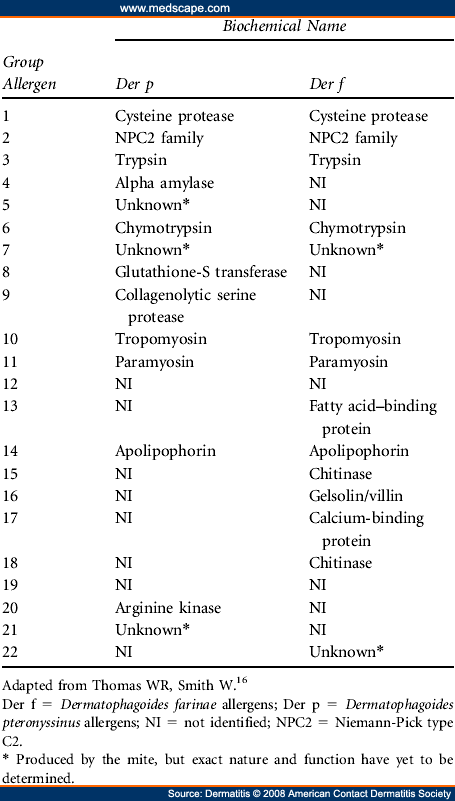Abstract and Introduction
The association between house dust mites (HDMs) and atopic dermatitis (AD) has long been a contested issue in both dermatology and allergy/immunology. As AD continues to burden millions of individuals and even whole societies, the commercial availability of a HDM allergen mix for epicutaneous testing has revived efforts to identify a definitive link between HDMs and AD. Conclusive evidence of a role for HDMs in the pathogenesis of AD would justify patch testing with mite allergens and would further the use of allergen-specific immunotherapy in the management of such patients; an absence of involvement would refocus our investigative efforts on other conspirators. We present a thorough review of the dissenting scientific evidence and expert opinions on this controversial topic. The association of HDMs with AD has remained elusive, and additional investigation is necessary to resolve this vexing riddle.
THE TERM “ATOPY” refers to a state of susceptibility to hay fever, asthma, and atopic dermatitis. “Atopic dermatitis” (AD) specifically represents a dermatosis particularly common among children. Epidemiologic data indicate that the prevalence of AD in developed countries has increased substantially over the last 40 years and in some societies may now be as high as 17%.[1,2] While predominantly a disease of childhood, the condition may persist in up to 60% of adults, and late-onset disease, while unusual, has been reported.[3] Accordingly, the costs to society brought about by this affliction continue to worsen. Recently, Ellis and colleagues estimated the annual cost of AD in the United States at $0.9 to $3.8 billion.[4]
Given this socioeconomic burden, much research has been conducted to elucidate the etiology and pathophysiology surrounding this condition. The house dust mite (HDM), a ubiquitous organism, has been implicated in the etiology and exacerbation of the disease. With the recent commercial availability of a HDM-derived allergen mix for epicutaneous testing, controversy has arisen regarding the utility of this testing modality. Moreover, a systematic review of two large double-blind placebo-controlled trials on HDM avoidance in adults with asthma revealed no clinical improvement, raising the question of whether such is true for AD as well.[5] Therefore, it is useful to review the evidence implicating HDMs in AD and the potential role of patch tests with HDM allergens in managing these patients.
Dermatitis. 2008;19(3):121-128. © 2008 American Contact Dermatitis Society
Cite this: Atopic Dermatitis, Patch Testing, and House Dust Mites: A Brief Review - Medscape - Jun 01, 2008.






Comments